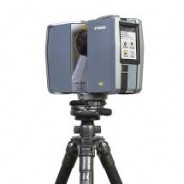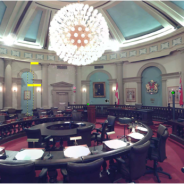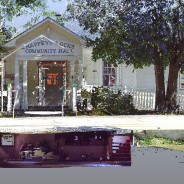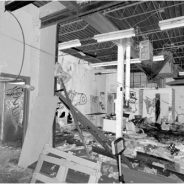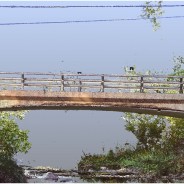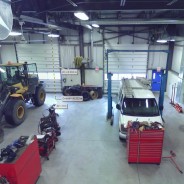This is a rapidly-developing field, with many project types that no-one had thought of before. We want to keep you up to date on those ideas, because some of them might apply to you! New projects also bring new challenges, and this is our chance to tell you how we solved some of those. We are proud of our team, and proud of their ability to analyze situations and solve problems so that all of our work is done accurately, rapidly, and to fully meet your objectives. Follow our progress below!
What is Laser Scanning?
3D Laser Scanning is a non-intrusive means of rapidly collecting detailed and accurate as-built data. A 3D Laser Scanner emits a narrow laser beam that “sweeps across” a target object gathering millions of closely spaced measurements in a matter of minutes. These scanned measurements are collected and grouped into compressed point cloud databases that can be manipulated to display a dense representation of the object. This data can be viewed, navigated and analyzed much like a 3D model created in a traditional CAD system. There are two...
read moreHistorical Sites
Historical sites bring a wealth of value and challenges to those who are responsible for them. How best to share them with the public? How best to protect them against damage and the ravages of time? How to describe them and share data for research, for repairs or for restoration? Canyon Logics uses 3D laser scanning technology to create virtual reality point cloud data sets of these valuable assets, no matter what their size. The point cloud provides not only the starting point for building an asset database in a CAD or BIM environment,...
read moreProviding As-Built Information
Canyon Logics provides a valuable service to building managers who have very little current as-built or condition information on their buildings. The point cloud information is used to create emergency plans, renovation contract drawings, complete condition assessments and 3D “virtual reality” historical records. The first step is to create a point cloud of the building, such as the one shown at the top of the page, showing the outside and the basement of the Chaffey’s Locks Community Hall, or below, the same hall, showing...
read moreVacant Building Assessment
How do you know what to expect in an empty, unlit building? How do you make a plan for it, or present it to prospective purchasers? How do you respond if you get a 911 call from someone squatting inside? Canyon Logics uses 3D Laser Scanning to capture information in hazardous environments like vacant buildings for emergency services risk and condition assessments. The Laser Scanner can be controlled remotely and can capture point cloud data in darkness, with surprisingly clear results, as can be seen in the photo.
read moreBridge Inventory
Bridges and other major infrastructure require regular monitoring and assessment to ensure that they are in good condition. As plans are made to inspect and maintain these structures, it is vital to have accurate information on file that provides accurate measurements, condition at last inspection, notes about anomalies and site-specific issues. Canyon Logics uses 3D Laser Scanning technology to capture bridge information in a virtual environment, providing a basis for taking measurements and recording condition assessment information. This...
read moreSpace Analysis
Asset managers are regularly called upon to reconfigure spaces and to try to make better use of what they currently have. Canyon Logics captures point clouds and creates AutoCAD drawings which can be used to improve the utilization of asset space, permitting a full inventory of furnishings, and a careful analysis of office, meeting, storage, and public areas.
read more
